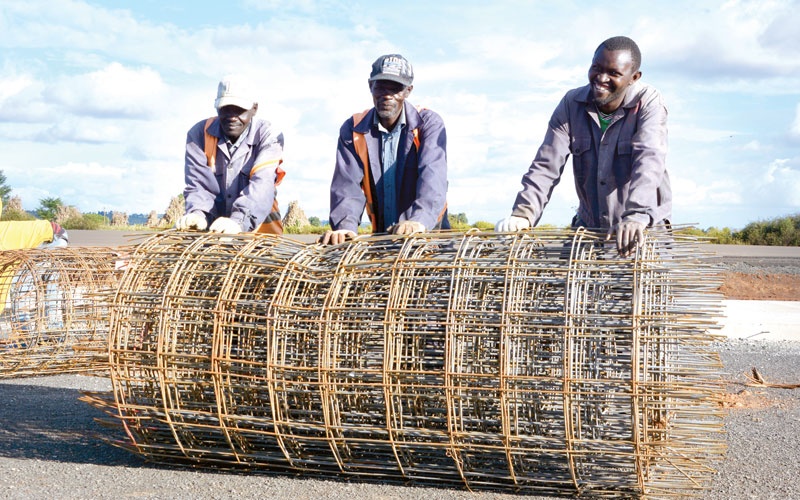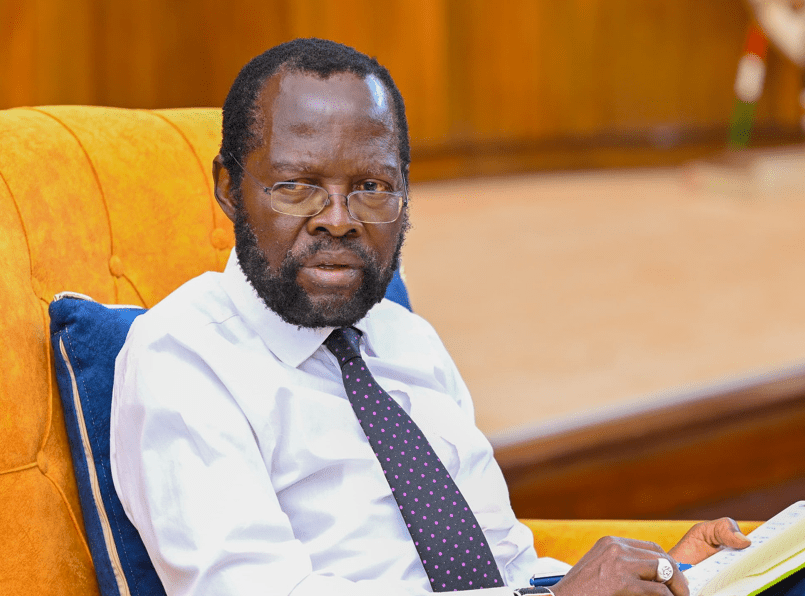Upcountry road projects boost local economies

Kenyans living upcountry are beginning to enjoy socio-economic benefits from government-initiated road projects despite such regions not attracting as much attention as Nairobi.
This is true for road projects in major towns such as Eldoret as well as small markets such as Karwino in Murang’a and Navakholo in Kakamega county.
One such project is the Eldoret Southern By-pass, a 32km road that seeks to decongest Eldoret ‘s Central Business District (CBD) by diverting vehicles transiting to Kitale and Uganda. Currently under construction, the road begins at Cheplaskei on the Nairobi-Kitale Road, diverting traffic southwards through Kapseret and rejoins the Nairobi-Kitale Road at Maili Tisa junction on the outskirts of Eldoret town.
Easing CBD congestion
Re-routing vehicles headed to Malaba Webuye and Kitale away from the central business district will result in decongestion in Eldoret town. The economic hub of the North Rift, Eldoret hosts several agriculture-based companies, an international airport and several universities.
Once complete, the by-pass is expected to divert over 40 per cent of the traffic from the CBD, comprising of mostly cargo trucks and passenger buses, says the project’s Resident Engineer, Joseph Gichuru. “This by-pass will reduce congestion in Eldoret and make it easier for people travelling to Western Kenya, Kitale and Moi Airport to reach their destinations,” he said.
“As we speak, passing through Eldoret town, a three kilometre section, can take two to three hours. Trucks going to Uganda, Congo and South Sudan will have an easy time once this road is completed. It will save time and money for the truckers,” Gichuru added.
His sentiments were shared by James Wafula, a truck driver who ferrys petroleum products to Uganda via Malaba. “Driving through Eldoret is usually a nightmare due to traffic jams. The upcoming bypass will save us a lot of pain,” he said.
Compensation cash
Currently, Eldoret CBD is a traffic choke point as all vehicles heading to Malaba and Kitale from Nairobi, including cargo trucks, have to pass through the town centre resulting in a traffic deadrock. “By-passes are improving lives in Nairobi and people here have been waiting for such projects for a long time,” said Gichuru.
The engineer said easing congestion will make Eldoret more attractive to investors, travellers using the airport and make it easier for locals to access facilities such as the Moi Teaching and Referral Hospital.
Already, the Maili Tisa interchange, currently under construction, is a source of pride for many locals due to its futuristic design. It will have internal and external interloops to mirror Nairobi’s Southern Bypass interchange at Ole Sereni.
The Sh5 billion shilling project, funded by African Development Bank (97 per cent) and the government (three per cent), was launched by President Uhuru Kenyatta in August 2017. Unfortunately, the project, being implemented by China Wu Yi Company, is only 20 per cent complete due to delays in compensating land owners affected by the construction, according to Gichuru. “A number of land owners lack proper documentation while others are involved in family disputes,” he said.
Land compensation for the project is estimated to cost Sh4.2 billion. The road will have three modern interchanges and seven bridges, including a 150m long bridge over the Lemook Swamp.
To recoup business opportunities lost in diverting traffic out of town, the contractor is building a 100 truck capacity parking bay at Maili Tisa on a site that previously served as a chicken market. Hawkers who used to work here were compensated by the National Land Commission for loss of livelihood despite this being Kenya Defence Forces (KDF) land. Once the parking bay is operational, they will go back to business.
Even before the project is completed, locals are already benefitting, with 400 of them (75 per cent of whom are youths) employed by the project. The number rises to 800 during peak time.
David Kirwa Bett, a 36-year-old resident, considers the road a prayer answered. From his land compensation cash, he has built two permanent houses, one for himself and another for his mother, something he previously considered unattainable.
Nyoka Nyoka road
“We used to live in a bush with no road to go to town. Going to Simat Secondary School across the ridge was a big challenge. Now we have a new road. “Thanks to the project, land in the area now goes for an average of Sh3 million an acre, up from Sh200,000 a year ago,” Bett said.
In Murang’a county, the Kangema-Gacharage Road (C70), popularly known as Nyoka Nyoka due to its many winding bends, is a good example of how a road project can spur socio-economic growth. Before the road, commissioned in November 2016, was constructed, residents of Kahuti, Murang’a, had to travel about 50km to Kigumo town via Murang’a town to Kaharati before taking the Kangare route. This distance has since been shortened to about 19km, thanks to Nyoka Nyoka road.
Michael Irungu Chege, 45, a local Kahuti community leader, considers the road, which traverses Kangema, Kiharu, Kigumo and Kandara constituencies, a godsend. “The road has shortened the time it takes from Kahuti to Kigumo town. It’s now easier to reach institutions such as Njiiri’s School, Muriranja Hospital and even Maragwa Hospital,” says Chege.
“The road has created towns in places where none existed. Now everyone knows Kahuti, Gatuya and Gacoco,” he adds, referring to townships that have sprouted along the C70 road.
At Karwino junction, for instance, a new shopping centre has sprung up complete with a hotel, fast moving consumer goods shops, a bodaboda shed, and a busy bus stop among others. Previously, students and parents going to Njiiri’s School had to use the Murang’a town-Kaharati-Kangari route, a much longer journey.
Market access
“From here (Karwino) to Kigumo, we used to follow the Murang’a town-Kaharati-Heho-Muthithi-Karera-Kigumo route, over 50km long. Nowadays you just go via the Kahuti-Gacoco-Karega-Kigumo route, a distance of about 20km,” said Chege.
The new road has made it easy for residents to go about their business are matatus ply the route. Chege’s views are shared by Jackson Kaniu, a transporter who has been in the business for six years now. “Transporting milk from Karwino to Kahuro collection centre back then was hectic and costly. Muturiini Hill was, especially a problem when it rained. We now charge Sh3,000 for the same distance we used to charge Sh6,000 before the road was constructed,” says Kaniu.
Peter Kimani, a vegetable farmer from Gatuya market is thankful that he can now take his produce to the nearby Kahatia and Kahuro markets in time. “Our avocadoes used to rot in the farm due to bad weather. Now we take them to the market easily,” he said.
Nyoka Nyoka’s success is replicated in Navakholo and Ikolomani in Kakamega county. In Navakholo, the ongoing Lurambi-Navakholo-Kandunyi-Musikoma Road (C41) is the only tarmac road the young constituency, hived off from Lurambi in 2013, has had since independence.
“This is a shortcut from Navakholo to Bungoma, about 25km away. Previously we had to go through Mumias a distance of over 50km,” said Kennedy Barasa, Navakholo CDF Committee Chairman.
His views are supported by Asman Lukohe, a boda boda rider from Nambacha market. “Going to Kakamega and Bungoma now takes very little time. Before the tarmac, it used to take about two hours to Kakamega town due to the bad condition of the road,” said Lukohe.











